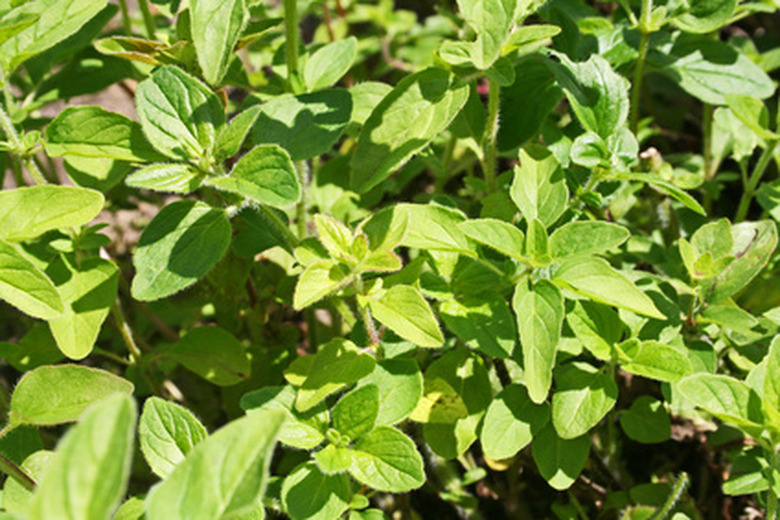Tips For Growing Greek Oregano For Ground Cover
Greek oregano's official nomenclature is Origanum vulgare subsp. hirtum. It is native to the Mediterranean and has been found growing naturally as far as the eastern coast of China. It is a perennial herb growing from multiple stalks and has a hardy, sprawling root structure which makes the most of what moisture it can find in arid conditions. When cultivated, Greek oregano forms a small bush that reaches 24 inches in height with an equal radius. As its oils act as a natural deterrent to insects, Greek oregano can be cultivated as a ground cover in garden beds.
Planting
Soil preparation is needed, as making Greek oregano into a ground cover will stress the plant. The selected area should receive direct sunlight a minimum of eight hours a day and have well-draining soil that's a little on the sandy side. The ground should be broken up thoroughly and all surrounding grass and weeds removed to decrease competition for resources. If growing from seeds, do not plant them. Leave them on the ground. Sunlight is needed for germination. Each plant should receive at minimum of 18 inches clearance from other Greek oreganos. Before planting, sow the soil with bone meal and powdered rock phosphate in a 2:1 ratio totaling 2 cups per plant. This will help speed germination.
- Greek oregano's official nomenclature is Origanum vulgare subsp.
- Soil preparation is needed, as making Greek oregano into a ground cover will stress the plant.
Planting Times
Greek oregano is capable of surviving in zones 4 through 9. However, it will begin to grow from seed in temperatures below 70 F. Because of this, do not plant according to season. Instead, plant as soon as local temperatures rise to 70 F. This will allow for more growth time before next winter.
Pruning
Pruning is essential to keep the Greek oregano to the role of a ground cover. It will naturally attempt to form a rounded bush. Keep it close to the ground by clipping new buds of all upward-tilting shoots. Anything attempting to rise more than 1 foot above the ground should be cut off. After several months of this treatment, the Greek oregano will begin to send shoots outward rather than upward.
- Greek oregano is capable of surviving in zones 4 through 9.
- However, it will begin to grow from seed in temperatures below 70 F. Because of this, do not plant according to season.
Feeding
While still young, the Greek oregano has little need for additional feeding. Watering should only be done when the surrounding soil is bone dry. Once the plant is old enough to prune, it will need extra nutrients to overcome the shock of repeated clippings. As it is a leafy, green plant, a high-nitrogen liquid or time-released fertilizer would work best.
References
- "Perennials"; Gerald Jonas, Bonnie Kreitler, Ann Reilly, David S. Thomson; 1988
- "The Herb Gardener: A Guide for All Seasons"; Susan McClure; 1997
- "Lawns and Groundcovers"; Gerald Jonas, Ann Reilly, David S. Thomson; 1989
